Earlier this year we welcomed a specially commissioned Hero Arm into the V&A storerooms. Created and designed by Bristolian company Open Bionics, the Hero Arm is a lightweight, affordable 3D-printed prosthetic arm inspired by bionic superheroes, and designed alongside children.
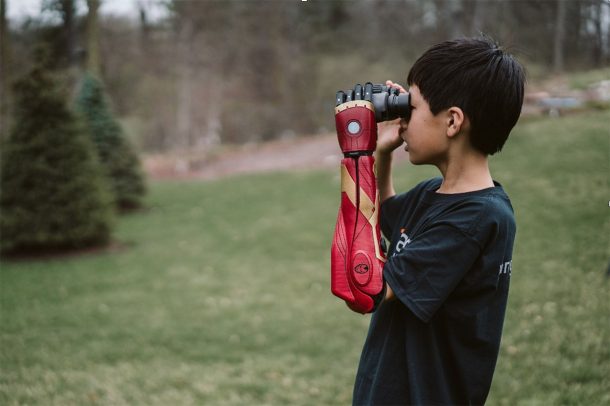
The Hero Arm is a perfect acquisition for Young V&A: it is an intelligently designed object used by children worldwide and, significantly, it has the voices and ideas of children and young people at the very centre of its design story.
When Young V&A opens in 2023 the Hero Arm will feature as a key case study in the Design gallery, a space created for 10 – 14-year-olds, exploring design as a force for change in the world.
To research the display, the YV&A curatorial team travelled to the Open Bionics headquarters in Bristol, where we were given access to an archive of materials detailing their design work with children and young people. The stories we uncovered show how the creativity and energy of children can push a design into totally new territory.
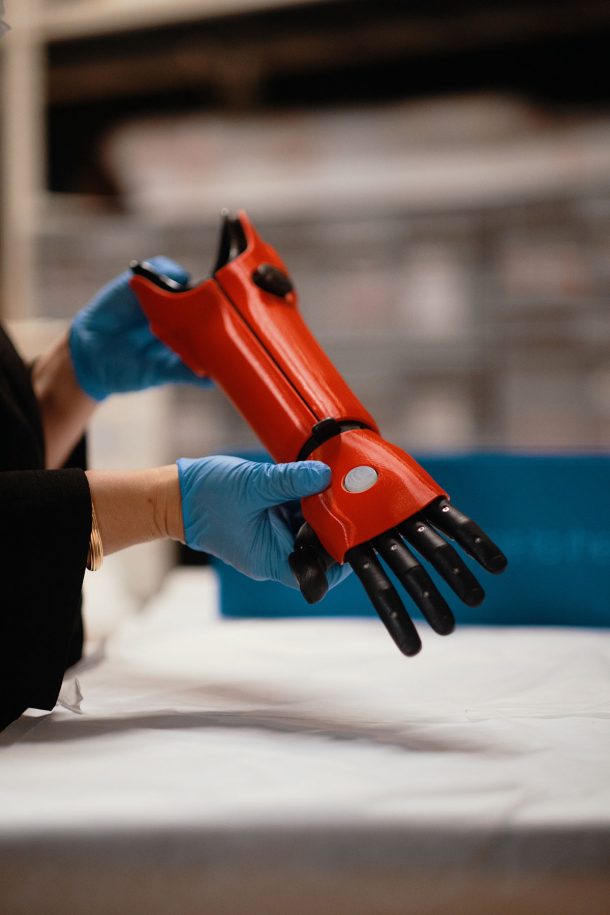
I WOULD LIKE A ROBOT SORT OF HAND…
Early in the development of the Hero Arm, Open Bionics founders Samantha and Joel invited a group of children and young people with limb differences to feedback on prototypes, and to explore what their dream bionic limb would look and feel like.
Open Bionics initially set out to create a prosthetic with advanced capabilities – one that had more technical features than any other limb on the market. However, their development sessions with children and young people emphasised a side of prosthetic design that hadn’t been considered, such as the psychological aspect of owning and wearing a prosthetic, the aesthetics, the playfulness, and the desirability.

While it now seems an obvious aesthetic choice for a bionic arm, it was initially uncommon to make prosthetics that consciously tried to look robotic. The children and young people that worked with the designers made it clear that they had no interest in a prosthetic that looked like a realistic human limb. If they were going to wear a bionic limb, why couldn’t it make them look like a robot or a superhero? Why couldn’t they change its design to match their style, their mood, or their favourite cartoon character?
The lessons taken from these design sessions were used in the next stage of the Hero Arm’s development. Joel and Samantha moved their focus away from hyper-functionality, on to building an affordable arm with a powerful superhero aesthetic and changeable covers that children could be proud of and excited about.
BIONIC FINGERPRINTS
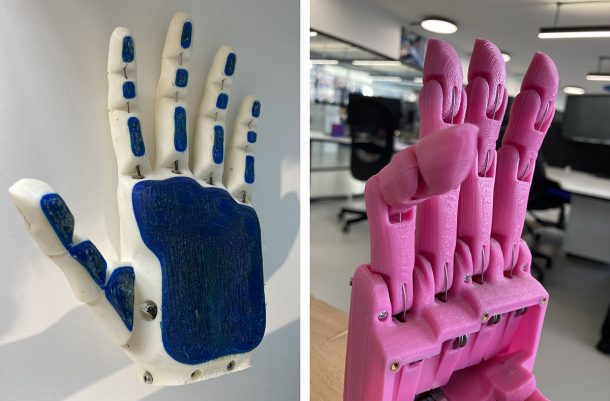
Neither fingerprints nor fingernails were considered crucial to the design of the Hero Arm during consultation with the children and young people. However, an incidental result of the 3D printing process when making the first prototype accidentally brought these two human features to the design. Patterns of concentric circles covered the prototype’s palms and fingertips, creating strange ‘bionic fingerprints’ – and the plain white caps that anchor the steel wires that control the hand looked like fingernails.
This was something that young users immediately connected with. The ability to paint your fingernails, or inspect your fingerprints, gives an emotional connection with the device attached to your body, making it feel like an extension of you.
WHAT ABOUT A HAND THAT CAN HOLD … A HOUSE?
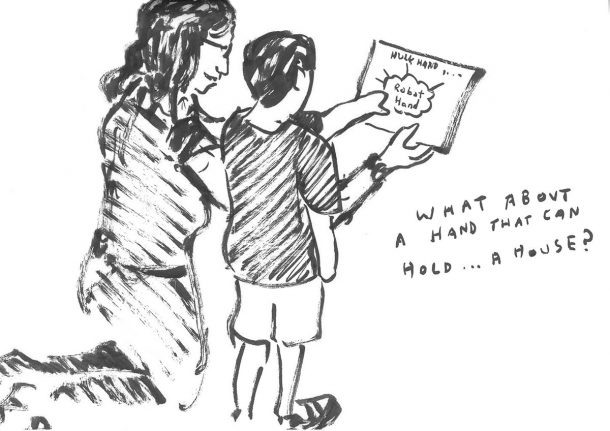
Unrestricted by the caution of the adult imagination, children and young people in Open Bionics’ early design sessions were happy to make unexpected requests and propose the impossible. Ideas for Hero Arm features included lipstick hidden in fingers, lasers shooting from the palm or a compass in the wrist to help navigate the winding streets of Bristol. All suggestions were sketched, many were prototyped and explored, but most proved impractical (or in the case of the laser, a bit dangerous).
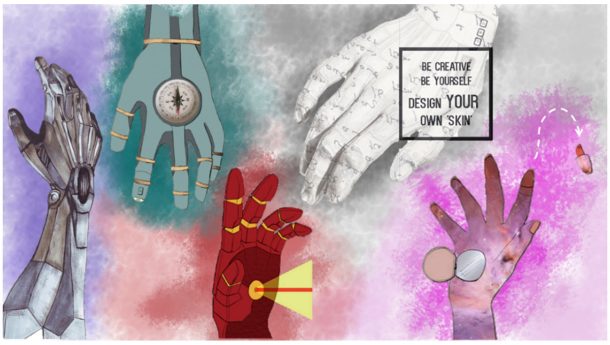
Out of multiple iterations of children’s ideas came an idea that stuck. The lock button, now a key feature of the Hero Arm, was suggested by Tilly, who was tired of dropping her brushes when doing her makeup. The lock button freezes the Hero Arm’s fingers in place, meaning that anything within its grip is secured firmly. You can see Tilly explain the lock button in this video below, and you can see the incredible make-up looks she’s created over the years on her TikTok.
The ideas and inspiration that children and young people fed into the development of the Hero Arm created a bionic arm that is uniquely playful and empowering for any age. All the features suggested and inspired by children are just as popular with adults. The interchangeable covers are perfect for Christmas parties, the superhero aesthetics are beloved by Marvel fans, and the lock button is perfect for holding pints at the pub.
The design story of the Hero Arm poses the question to all designers of how to harness most effectively children’s creativity in the design process.
The Hero Arm will be on display in the Design gallery of the Young V&A, opening in 2023. See our website to read more about Young V&A and how design can help young people act as change-makers in the world.



Hello! I just saw a news story on the Hero Arm and when I googled, your web site came up. You may be interested in this inspiring story about a young girl who has the Hero Arm. She ‘paid it forward’ with her GoFundMe account.
https://www.youtube.com/watch?v=vb62KIEAlqc
p.s. My husband and I will be visiting the V and A next month while on vacation!